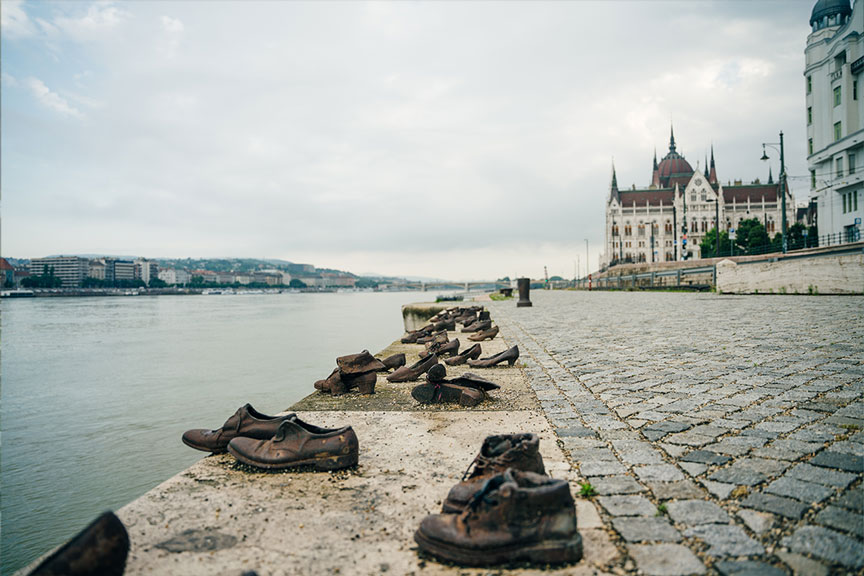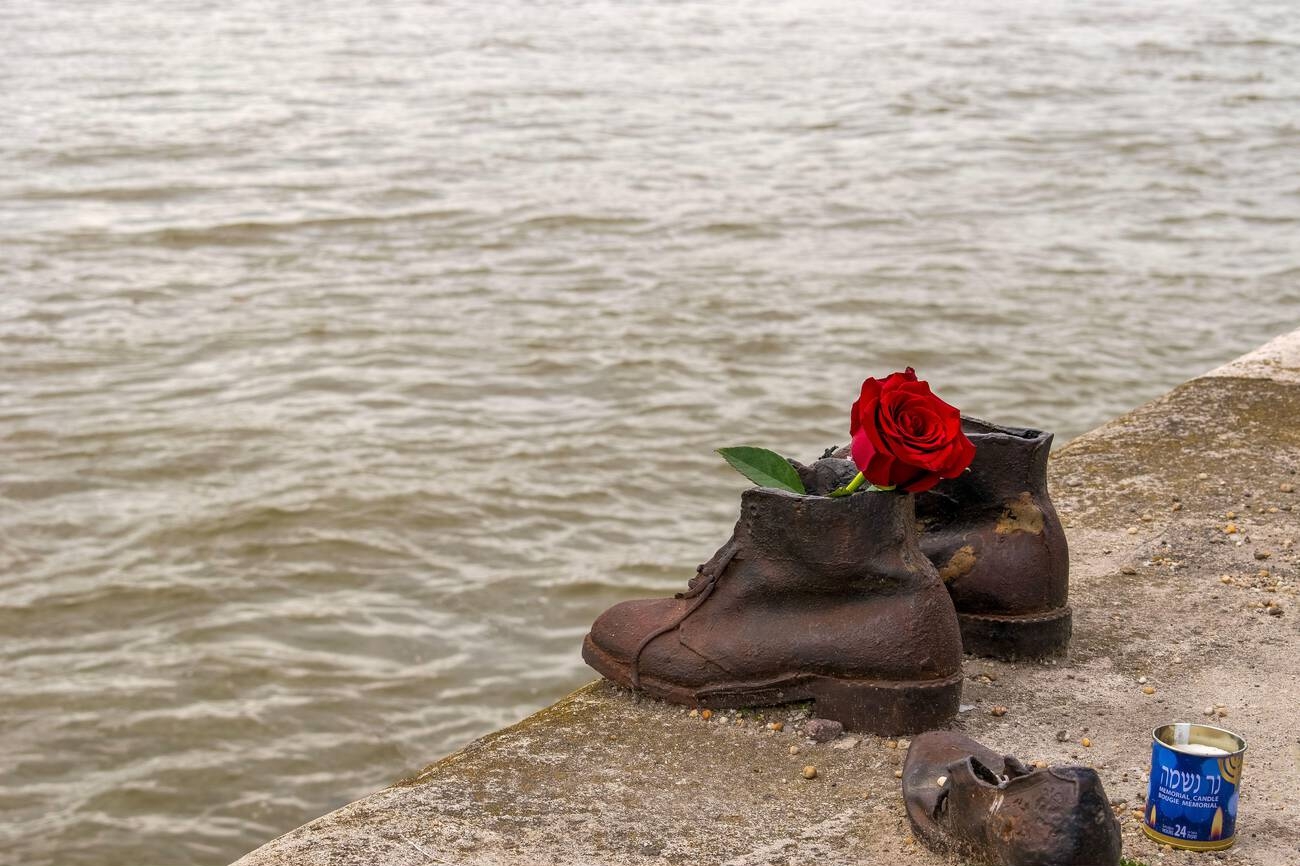
The Shoes on the Danube Bank is more than just a picturesque installation; it’s a chilling reminder of one of the darkest chapters in human history. Situated on the banks of the iconic Danube River in Budapest, Hungary, this moving memorial serves as a poignant tribute to the countless lives lost during World War II. In this blog post, we will delve into the significance of this haunting monument, the historical context that inspired its creation, and its enduring impact on visitors from around the world.
Shoes on the Danube Bank: Unveiling the Memorial
The Shoes on the Danube Bank was unveiled on April 16, 2005, with the aim of commemorating the Jews who fell victim to the cruelty of the Arrow Cross militia, a fascist organization that collaborated with the Nazis during the war. The monument, conceptualized by film director Can Togay and sculptor Gyula Pauer, stands as a stark portrayal of the atrocities committed during the Holocaust and is designed to evoke emotions of grief, empathy, and reflection.
A Grim Reminder of Tragedy
The Danube River, a symbol of unity and continuity in Budapest, witnessed countless acts of brutality during World War II. The Jews, persecuted and hunted by the Arrow Cross, were often taken to the river’s edge, ordered to remove their shoes, and then shot, causing their lifeless bodies to fall into the river’s icy depths. The Shoes on the Danube Bank replicates this horrific scene with sixty pairs of rusted iron shoes of varying sizes and styles, representing men, women, and children who met their tragic end at the hands of hatred and intolerance.
Walking in Their Shoes: The Impact on Visitors

As visitors approach the memorial, they are confronted with a chilling scene that commands respect and reflection. The stark reality of the memorial fosters a deep sense of connection with the past, allowing visitors to empathize with the victims and contemplate the consequences of intolerance. The sensation of standing among the empty shoes has a powerful way of humanizing the tragedy, leaving an indelible mark on each individual who witnesses this haunting display.
A Call for Tolerance and Unity
While the Shoes on the Danube Bank serves as a poignant remembrance of the past, it also carries a timeless message of hope and unity. The memorial stands as a call to action against hatred, discrimination, and persecution in all forms. It will remind you to embrace diversity and foster a world where such atrocities are never repeated.
Preserving Memory for Future Generations
As time passes and the memories of those tragic events fade, it becomes increasingly vital to preserve the history and lessons of the Holocaust. The Shoes on the Danube Bank plays an essential role in this endeavor, acting as a tangible, solemn reminder for future generations to learn from the past and strive for a better, more compassionate world.
Shoes on the Danube Bank: A living testament to the resilience of the human spirit
The Shoes on the Danube Bank is not merely a collection of shoes; it is a living testament to the resilience of the human spirit and a harrowing reminder of the horrors we are capable of inflicting upon one another. As we visit this haunting monument, we are compelled to reflect on the past, learn from its lessons, and work together to build a future where unity, tolerance, and compassion triumph over hatred and discrimination. May this poignant memorial continue to touch the hearts of all who encounter it, and may it serve as a perpetual beacon of hope for a more enlightened and empathetic world.









